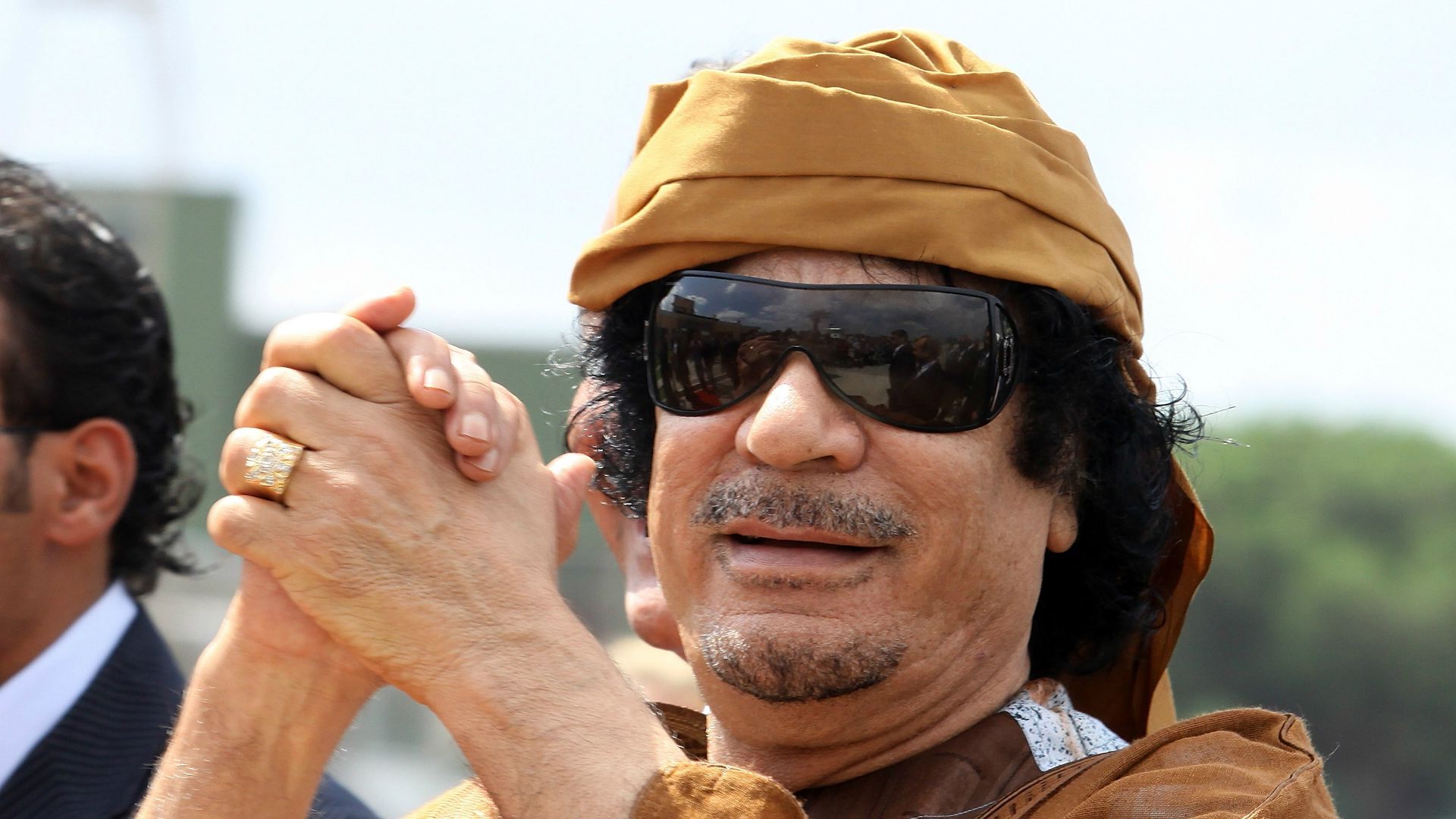
Who was Muammar Gaddafi? Muammar Gaddafi, often spelled Qaddafi, was a Libyan revolutionary and politician who ruled Libya for over four decades. Born in 1942, he seized power in a 1969 coup, overthrowing King Idris I. Gaddafi's rule was marked by his unique blend of socialism and Islam, which he called the Third International Theory, outlined in his Green Book. Known for his flamboyant personality and controversial policies, he was both admired and reviled. His regime faced numerous accusations of human rights abuses and sponsoring terrorism. Gaddafi's rule ended in 2011 during the Arab Spring, when he was captured and killed by rebel forces.
Key Takeaways:
- Muammar Gaddafi, the former leader of Libya, rose to power through a coup and implemented unique political ideologies, but his controversial actions led to his downfall and the country's ongoing struggle for stability.
- Gaddafi's legacy is marked by complex political ideas, support for revolutionary movements, and human rights abuses, leaving a lasting impact on Libya and the world. His rule serves as a cautionary tale of the dangers of authoritarianism.
Early Life and Rise to Power
Muammar Gaddafi's journey from a young boy in the desert to the leader of Libya is filled with intriguing details. Let's explore some key moments from his early life and rise to power.
- Born in a Bedouin tent in 1942, Gaddafi grew up in the desert region of Sirte, Libya.
- His family belonged to the Qadhadhfa tribe, a small and relatively poor group.
- Gaddafi's father was a goat herder, and his upbringing was modest.
- He attended a Muslim elementary school, where he was introduced to Arab nationalist ideas.
- Inspired by Egyptian President Gamal Abdel Nasser, Gaddafi developed a strong sense of Arab unity.
- He joined the military academy in Benghazi in 1963, where he excelled as a cadet.
- Gaddafi formed a secret revolutionary group with fellow officers while still in the academy.
- In 1969, at the age of 27, he led a bloodless coup that overthrew King Idris I.
- After the coup, Gaddafi declared Libya a republic and himself its leader.
- He adopted the title "Brotherly Leader and Guide of the Revolution," emphasizing his role as a revolutionary figure.
Political Ideology and Policies
Gaddafi's political ideology and policies were unique and often controversial. His vision for Libya and the world shaped his leadership style and decisions.
- Gaddafi was a proponent of Arab nationalism and socialism.
- He published the "Green Book" in 1975, outlining his political philosophy.
- The Green Book rejected both capitalism and communism, advocating for a third way.
- Gaddafi's ideology emphasized direct democracy through "People's Committees."
- He nationalized the oil industry, increasing state control over resources.
- Gaddafi's government provided free healthcare and education to Libyan citizens.
- He promoted women's rights, encouraging their participation in the workforce.
- Gaddafi's regime was known for its strict censorship and suppression of dissent.
- He sought to unify Africa, proposing the creation of a "United States of Africa."
- Gaddafi's foreign policy was marked by support for various revolutionary movements worldwide.
Controversies and Conflicts
Gaddafi's rule was marred by numerous controversies and conflicts, both domestically and internationally. His actions often drew criticism and led to strained relations with other nations.
- Gaddafi's regime was accused of human rights abuses, including torture and extrajudicial killings.
- He supported terrorist organizations, including the Irish Republican Army (IRA) and the Palestine Liberation Organization (PLO).
- In 1986, the United States bombed Libya in response to Gaddafi's alleged involvement in the Berlin discotheque bombing.
- Gaddafi was implicated in the 1988 Lockerbie bombing, which killed 270 people.
- Libya faced international sanctions throughout the 1990s due to its support for terrorism.
- Gaddafi's government was accused of sponsoring the 1989 bombing of UTA Flight 772.
- He had a complex relationship with the West, at times seeking rapprochement and at other times antagonizing Western powers.
- Gaddafi's regime was involved in the Chadian-Libyan conflict, a prolonged military struggle with neighboring Chad.
- He faced internal opposition from various tribal and political groups.
- The Arab Spring in 2011 led to widespread protests against Gaddafi's rule, eventually resulting in civil war.
Downfall and Death
The final chapter of Gaddafi's life was marked by intense conflict and his eventual downfall. His death marked the end of an era in Libya.
- The Arab Spring protests in Libya began in February 2011, inspired by uprisings in Tunisia and Egypt.
- Gaddafi responded to the protests with brutal force, leading to a full-scale civil war.
- The United Nations authorized a no-fly zone over Libya, and NATO launched airstrikes against Gaddafi's forces.
- Rebel forces, with international support, gradually gained ground against Gaddafi's troops.
- In August 2011, rebels captured the capital city of Tripoli, signaling the collapse of Gaddafi's regime.
- Gaddafi fled to his hometown of Sirte, where he continued to resist the rebels.
- On October 20, 2011, Gaddafi was captured by rebel forces in Sirte.
- He was killed shortly after his capture, marking the end of his 42-year rule.
- Gaddafi's death was met with mixed reactions, with some celebrating the end of his dictatorship and others mourning the chaos that followed.
- Libya has since struggled with instability and conflict, with various factions vying for power.
Legacy and Impact
Gaddafi's legacy is complex and multifaceted, with lasting impacts on Libya and the world. His rule left an indelible mark on history.
- Gaddafi's Green Book continues to be studied for its unique political ideas.
- His nationalization of the oil industry significantly increased Libya's wealth.
- Gaddafi's support for revolutionary movements influenced global politics.
- His regime's human rights abuses remain a dark chapter in Libya's history.
- Gaddafi's vision for a United States of Africa inspired some African leaders.
- The civil war and subsequent instability in Libya have had far-reaching consequences.
- Gaddafi's death marked a turning point in the Arab Spring, influencing other uprisings.
- His rule is often cited as an example of the dangers of authoritarianism.
- Gaddafi's complex relationship with the West continues to be analyzed by historians.
- The ongoing conflict in Libya serves as a reminder of the challenges of post-revolutionary transitions.
Final Thoughts on Gaddafi
Muammar Gaddafi remains one of history's most controversial figures. His rule over Libya spanned over four decades, marked by both progress and oppression. Gaddafi's policies transformed Libya into a wealthy nation due to its vast oil reserves, yet his regime was also known for human rights abuses and suppression of dissent.
Understanding Gaddafi's complex legacy requires looking at both his achievements and his failures. He invested in infrastructure, education, and healthcare, improving the quality of life for many Libyans. However, his authoritarian rule and erratic behavior led to widespread suffering and international isolation.
Gaddafi's life and leadership offer a stark reminder of how power can be used for both good and ill. His story is a testament to the complexities of governance and the impact one leader can have on a nation's destiny.
Frequently Asked Questions
Was this page helpful?
Our commitment to delivering trustworthy and engaging content is at the heart of what we do. Each fact on our site is contributed by real users like you, bringing a wealth of diverse insights and information. To ensure the highest standards of accuracy and reliability, our dedicated editors meticulously review each submission. This process guarantees that the facts we share are not only fascinating but also credible. Trust in our commitment to quality and authenticity as you explore and learn with us.


